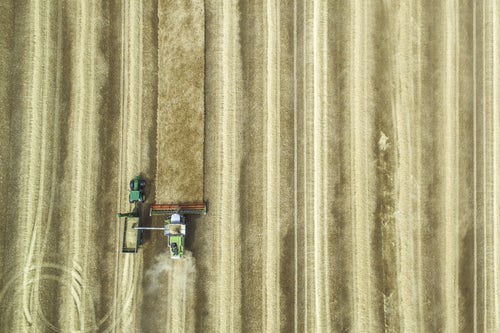
Physical Assets on the Blockchain: Why Bother?
Blockchain is really good for registering, controlling, and transferring assets. Its decentralized ledger means anyone can transact in a trusted network while being certain the assets they own are secure. However, so far blockchain has largely been limited to digital assets. Recently, new companies have proposed that we put physical assets on the blockchain as well.
That can be a tough idea to wrap your mind around. Right now, owning a physical asset like a car, oil, or land is a matter of trading legal documents. These documents can get confusing, and it can be difficult to determine the real owner of an asset. Putting physical assets on the blockchain would mean tokenizing them so they can become part of smart contracts. Selling a boat or an ounce of gold could be as simple as transferring the digital token to the new owner.
Trend Toward Tokenization
Tokenization of real-world assets has generated a lot of publicity over the past year. The key to understanding this trend is to look at it from a legal perspective. The actual physical objects don’t change just because they’re on the blockchain. However, tokenizing physical assets on the blockchain does make it more transparent who owns what. It creates a central source of truth for things like commodities trading, auctions, or property development.
Take, for example, blockchain agriculture where tons of corn, wheat, and other commodities get traded and handed off between suppliers every day. These handoffs often have complicated contracts for quality, liability, and delivery times. Using tokenization, those contracts could all be handled on the blockchain with a single source of real-time data about the status of all wheat, corn, etc at any given time.
Fungible vs. Unique
In a legal and technical sense, assets and their tokens can either be fungible or unique.
Fungibility is the characteristic of tokens and assets that can easily replace one another. A pound of silver is equal to another pound silver (as long as it’s the same quality), and they can be subdivided and traded accordingly.
Unique assets can’t be easily subdivided or declared equivalent. A boat is a unique asset, since it can’t be immediately swapped for another boat. While you could subdivide a unique token (as in owning a third of a given boat), you couldn’t necessarily trade subdivisions in the way you could a fungible asset. Perhaps one of the best examples of a unique blockchain asset is CryptoKitties with each tokenized cat having its own value and unique properties.
Both fungible and unique assets can exist on the blockchain. Ethereum has a token standard for fungible assets – ERC-20, soon to be ERC-223 – and another standard for non-fungible (unique) assets – ERC-721.
Ownership vs. Limited Rights
Another way blockchain could simplify rights management is by clarifying ownership versus limited rights. For instance, a landlord could own a piece of property but lease it to a tenant. That tenant doesn’t have the same rights or responsibilities as they would if they owned the property. It’s possible that limited rights could be built into a smart contract.
Limited rights apply to ideas like streaming services or art museums who lease paintings from private collectors.
These types of contracts would be more complex, but they’d be simpler to manage and understand on the blockchain than they often are in paper format.
Downside: Irreversible, Even in Court
The real challenge for putting physical assets on the blockchain is the permanence of blockchain transactions. For instance, imagine if the deed to your house was on the blockchain and your mortgage provider accidentally sent your house to the wrong recipient address. There’d be no way to retrieve it. Even worse, if that address belongs to someone, they’d now own your house!
Even a court case couldn’t get your house back. The only way would be for the network to agree on a fork of the blockchain. With mistakes happening every day, that would quickly become untenable. Solving this reversibility problem is the key to the success of physical assets on the blockchain.
Conclusion
Physical assets on the blockchain could simplify a lot of the issues of supply chain, logistics, and contract management. However, the technology has drawbacks that could prove to be challenging to usability. Before such a system can work, we need reliable ways for transactions to verify identity, avoid mistakes, and adjudicate disputes.
The post Physical Assets on the Blockchain: Why Bother? appeared first on CoinCentral.

Coincentral.com is author of this content, TheBitcoinNews.com is is not responsible for the content of external sites.
Our Social Networks: Facebook Instagram Pinterest Reddit Telegram Twitter Youtube










